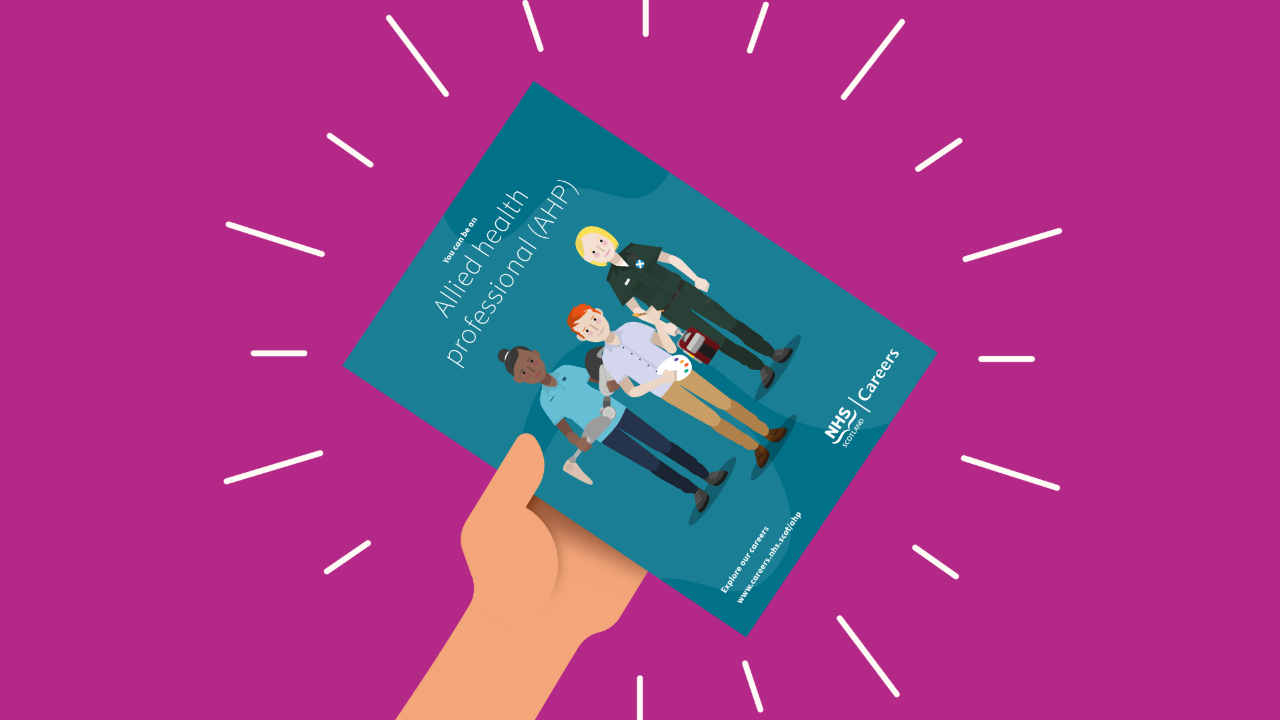
Joanne Gibson
07 November 2024
•4 min read

Who is Gillian?
Gillian is a diagnostic radiographer at the Golden Jubilee National Hospital, just outside Glasgow.
Diagnostic radiographers utilise imaging technology to capture high-quality images of the internal structures of the body. These images help make sure you get the right treatment, as they're used to diagnose and monitor illnesses or injuries.
Gillian decided to become a diagnostic radiographer because she wanted to work in healthcare. While at school, she took the opportunity to gain work experience with a radiographer, which really piqued her interest.
Gillian enjoys being a diagnostic radiographer because the role is very varied. She explains, "There's a big misconception that radiographers are just button-pushers, and that's wrong."
Diagnostic radiographers produce CT scans, MRIs, ultrasounds, and plain film X-rays. By developing their skills and gaining additional qualifications, diagnostic radiographers can specialise in a specific area of diagnostic imaging. Some move into management or reporting, and others go on to become consultant radiographers.
Every day is different in diagnostic radiography
In this video, Gillian describes her role as a diagnostic radiographer, working with people of all ages. She also shares the most important skills for this job, which are:
- communication
- problem-solving
- attention to detail
- empathy
Diagnostic radiographers work in radiography and imaging departments as well as in other areas of a hospital, including wards and operating theatres.
Gillian says, "It's a varied role, and each day is different. I enjoy being a diagnostic radiographer and meeting different people every day."
How to watch our 360 videos
To navigate the 360 videos on this page, follow these instructions:
- If you are using a mouse, hold the left or right button to move the cursor around the screen. Move the cursor to the left to turn left, and to the right to turn right, and so on.
- If you are using a laptop trackpad, click and hold anywhere on the trackpad, then use your finger to move the cursor around the screen. Move your finger to the left to turn left, and to the right to turn right, and so on.
- If you are using a mobile, press and hold the screen while moving your finger. Move your finger to the left to turn left, and to the right to turn right, and so on.
To get the full AHP VR experience, download our immersive video files to your headset.
Scene 1 video: computed tomography scan
Computed tomography (CT) is a complex imaging process that uses X-rays to produce a range of images. When combined, those images create a 3D view of the inside of the body.
In this scene, Gillian is assisting her patient, Wendy, in preparing for a CT scan. This involves injecting a special fluid that will help show the blood vessels and internal organs more clearly.
Scene 2 video: magnetic resonance imaging scan
In this scene, Gillian is scanning her patient using magnetic resonance imaging (MRI). MRI uses magnets and radio frequencies to manipulate hydrogen atoms in the body, to create images from the minute movements and relaxation of those atoms.
Once the images have been gathered, they show extremely fine anatomical detail. This makes it easier for consultants to understand what's going on inside the patient's body.
Scene 3 video: X-ray
In this scene, Gillian uses X-rays to image a patient’s hand. X-rays are typically the initial imaging modality used to diagnose bone injuries. They produce a 2D image of the anatomical area, and often, 2 images are taken for comparison.
You can become a diagnostic radiographer like Gillian
Diagnostic radiographers use cutting-edge imaging technology, including CT, MRI, ultrasonography, and X-rays. These high-quality images help doctors see what's happening inside our bodies to make accurate diagnoses and check how treatment is working.

Discover more allied health professions
Check out our AHP career guide and explore how you can become an allied health professional.